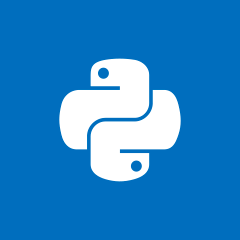在 sklearn 中为 dictvectorizer 和 Linearsvc 创建管道
根据我所读到的内容,我需要创建模型并将其保存为管道才能执行此操作。我一直在尝试根据 SO 上的其他示例来执行此操作,但无法使其工作。如何将现有模型转变为流水线版本?
第一个代码片段保存,第二个代码片段是我将其放入管道的尝试之一,但我收到“str”对象没有属性“items”错误。我认为这与 to_dict 过程有关,但不知道如何在管道版本中复制它,任何人都可以提供帮助。
dframe = pd.read_csv("ner.csv", encoding = "ISO-8859-1", error_bad_lines=False)
dframe.dropna(inplace=True)
dframe[dframe.isnull().any(axis=1)].size
x_df = dframe.drop(['Unnamed: 0', 'sentence_idx', 'tag'], axis=1)
vectorizer = DictVectorizer()
X = vectorizer.fit_transform(x_df.to_dict("records"))
y = dframe.tag.values
x_train, x_test, y_train, y_test = train_test_split(X, y, test_size=0.1, random_state=0)
model = LinearSVC(loss="squared_hinge",C=0.5,class_weight='balanced',multi_class='ovr')
model.fit(x_train, y_train)
dump(model, 'filename.joblib')
dframe = pd.read_csv("ner.csv", encoding = "ISO-8859-1", error_bad_lines=False)
dframe.dropna(inplace=True)
dframe[dframe.isnull().any(axis=1)].size
x_df = dframe.drop(['Unnamed: 0', 'sentence_idx', 'tag'], axis=1)
y = dframe.tag.values
x_train, x_test, y_train, y_test = train_test_split(x_df, y, test_size=0.1, random_state=0)
pipe = Pipeline([('vectorizer', DictVectorizer(x_df.to_dict("records"))), ('model', LinearSVC)])
pipe.fit(x_train, y_train)
 喵喔喔
喵喔喔1回答
-

慕容708150
你必须像这样调整你的第二部分:dframe = pd.read_csv("ner.csv", encoding = "ISO-8859-1", error_bad_lines=False)dframe.dropna(inplace=True)dframe[dframe.isnull().any(axis=1)].size x_df = dframe.drop(['Unnamed: 0', 'sentence_idx', 'tag'], axis=1)y = dframe.tag.valuesx_train, x_test, y_train, y_test = train_test_split(x_df.to_dict("records"), y, test_size=0.1, random_state=0)pipe = Pipeline([('vectorizer', DictVectorizer()), ('model', LinearSVC(loss="squared_hinge",C=0.5,class_weight='balanced',multi_class='ovr'))]) pipe.fit(x_train, y_train)您试图DictVectorizer()通过使用在参数中传递您的数据DictVectorizer(x_df.to_dict("记录"))但这不起作用。DictVectorizer 的唯一可用参数可以在文档中找到。第二个错误是您尝试将 DictVectorizer() 与来自 x_df 的数据一起放入管道中管道.fit(x_train,y_train)这里的问题是 x_train 数据将提供给您的DictVectorizer(),但 x_train 只是分割 x_df ,并且在您的代码中没有管道的早期,您ictVectorizer()以 的形式向 D 提供了数据x_df.to_dict("records")。因此,您还需要通过管道传递相同类型的数据。这就是为什么我已经将调整后的代码中x_df.to_dict("records")的 与分开train_test_split(),以便矢量化器可以处理它。最后一件事是,在定义管道时您还忘记了括号LinearSVC()(“模型”,LinearSVC)
 随时随地看视频慕课网APP
随时随地看视频慕课网APP
相关分类

 Python
Python